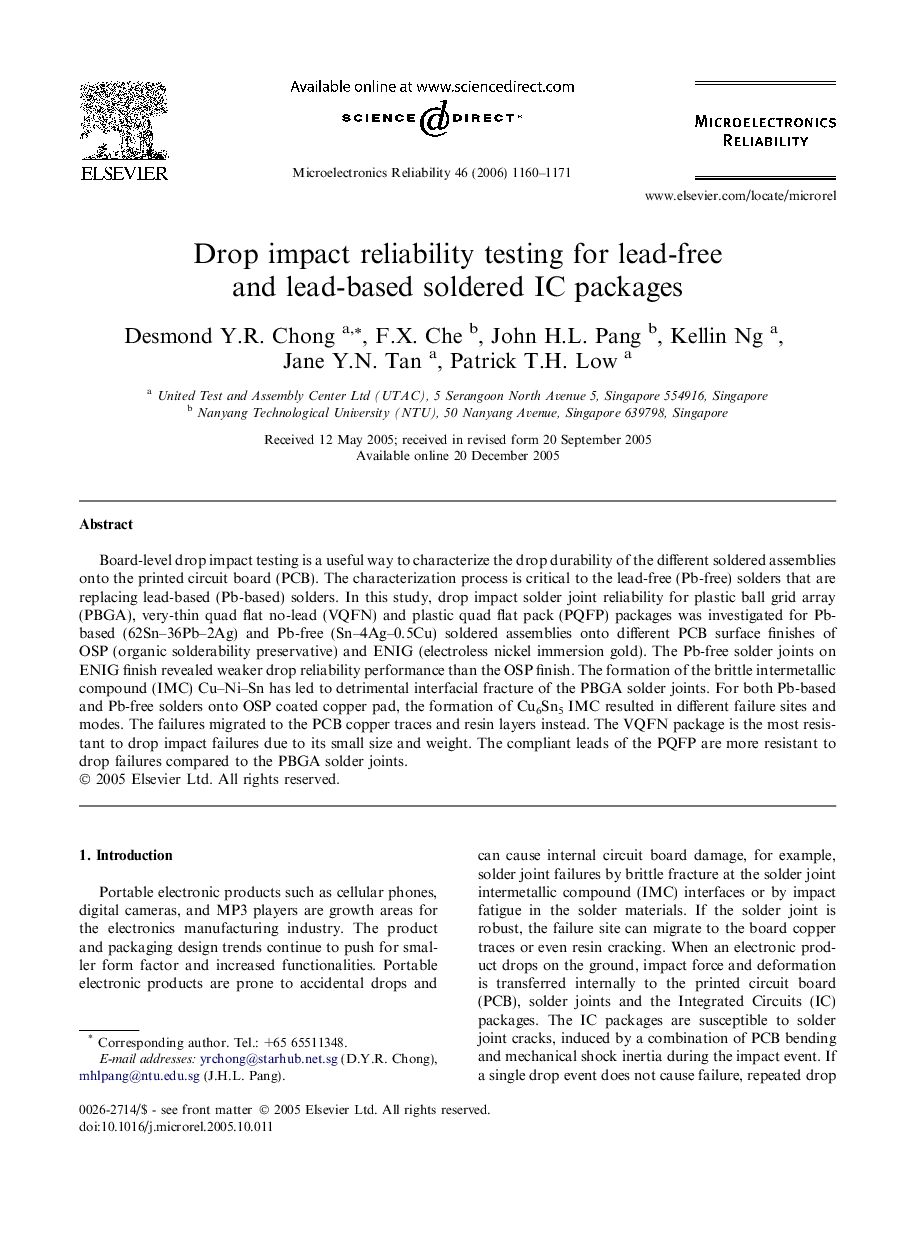| کد مقاله | کد نشریه | سال انتشار | مقاله انگلیسی | نسخه تمام متن |
|---|---|---|---|---|
| 546349 | 871887 | 2006 | 12 صفحه PDF | دانلود رایگان |

Board-level drop impact testing is a useful way to characterize the drop durability of the different soldered assemblies onto the printed circuit board (PCB). The characterization process is critical to the lead-free (Pb-free) solders that are replacing lead-based (Pb-based) solders. In this study, drop impact solder joint reliability for plastic ball grid array (PBGA), very-thin quad flat no-lead (VQFN) and plastic quad flat pack (PQFP) packages was investigated for Pb-based (62Sn–36Pb–2Ag) and Pb-free (Sn–4Ag–0.5Cu) soldered assemblies onto different PCB surface finishes of OSP (organic solderability preservative) and ENIG (electroless nickel immersion gold). The Pb-free solder joints on ENIG finish revealed weaker drop reliability performance than the OSP finish. The formation of the brittle intermetallic compound (IMC) Cu–Ni–Sn has led to detrimental interfacial fracture of the PBGA solder joints. For both Pb-based and Pb-free solders onto OSP coated copper pad, the formation of Cu6Sn5 IMC resulted in different failure sites and modes. The failures migrated to the PCB copper traces and resin layers instead. The VQFN package is the most resistant to drop impact failures due to its small size and weight. The compliant leads of the PQFP are more resistant to drop failures compared to the PBGA solder joints.
Journal: Microelectronics Reliability - Volume 46, Issue 7, July 2006, Pages 1160–1171